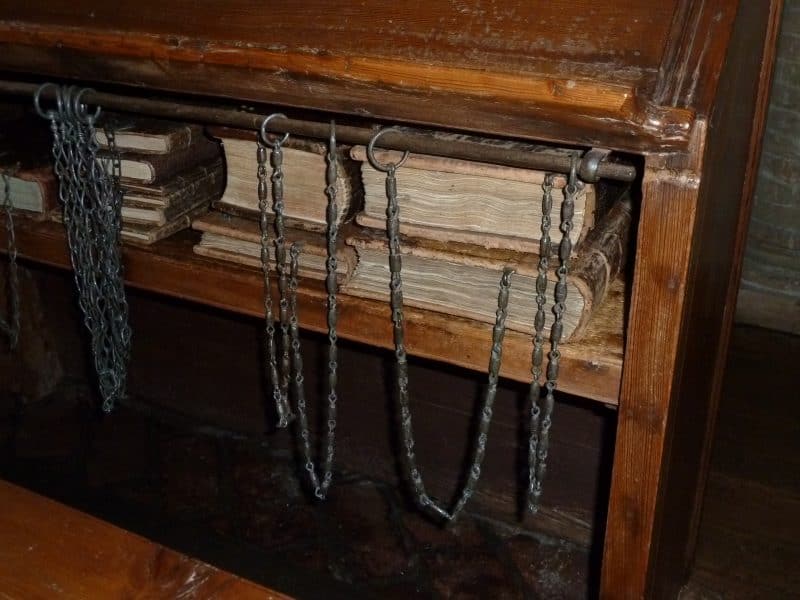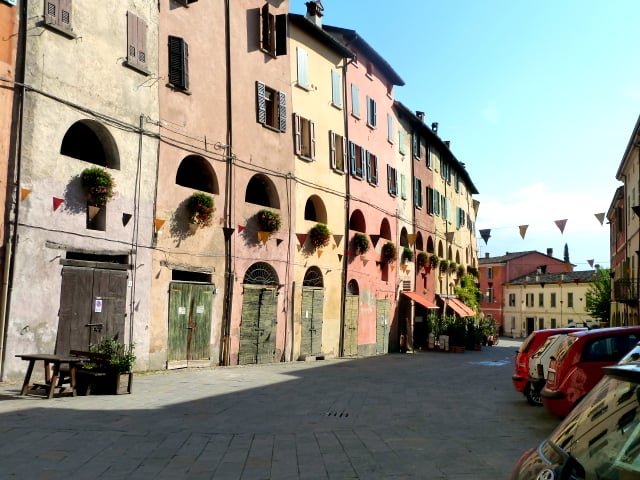Refuge Canada: A Compelling Exhibit At The Canadian Museum Of Immigration

Upon entering the Refuge Canada exhibit at the Canadian Museum of Immigration in Halifax, an eye-catching graphic reads:
“No one wants to be a refugee, anyone could become a refugee.”
The sentiment is not only stirring but also timely, given that immigration policies in the U.S. are under siege today with the unprecedented deployment of thousands of military troops to our southern border with Mexico. Draconian policies are also making it increasingly difficult for refugees to seek asylum.
It is estimated that each and every day, 28,300 people around the world are forced to flee their homes in Europe, Asia, South America, Africa and the Middle East because of strife and persecution—leaving behind their loved ones and cultural roots.
The Canadian Museum of Immigration at Pier 21
The Canadian Museum of Immigration is certainly an apt setting for a must-see exhibit like Refuge Canada.
Before the advent of air travel, people immigrating to North America typically arrived at major ports by ship. More than one million people were screened and processed through the self-contained Halifax reception center that operated on Pier 21 between 1928 and 1971.
Located at the seaport, the building remained vacant for some time and was threatened with demolition until it was rescued by the Pier 21 Society and converted into a museum in 1989. Although it began as an independent institution, it became a national museum in 2011, receiving support from the government of Canada and the Halifax Port Authority. Refurbished eight years ago, the spacious, light-strewn state-of-the-art museum also receives significant funds from private individuals and corporations. The Immigration Museum in Halifax is a sister institution to the Ellis Island Museum in New York City.

In addition to temporary installations, like Refuge Canada, the museum’s permanent exhibits make excellent use of art, artifacts, movies, quotes and oral histories to convey the immigrant experience.
The permanent museum exhibits
The Pier 21 Story portrays the in-vivo experience of what it was like for immigrants to arrive at this terminal.

The Canadian Immigration Story is an immersive multimedia experience that explains why diverse groups came (and come) to Canada, how they became acculturated, and their many contributions to their adopted country.

The Scotiabank Family History Center holds an exhaustive library of books and records that allow visitors to trace their genealogy. The museum also sponsors talks and special events for adults and children. During our visit on a weekday morning, we saw a group of some 400 middle and high school students leave the building; they had been there to hear a talk from a Holocaust survivor.
David, the excellent tour guide and docent we met during our visit, has been working as a volunteer at the museum for 19 years. He pointed out that the building’s concrete floors were original:
“Think of how many people have stepped on these floors,” he told us.
Refuge Canada: A traveling exhibit
Refuge Canada is the beautifully curated traveling exhibit is currently on display at the museum. It reminds visitors that the story of immigration in Canada is an ongoing one, continuing today as refugees flee their homelands because of war, poverty and oppression.

The exhibit offers many experiential opportunities. For example, visitors can open doors and experience the sights and sounds of masked gunmen or Nazi soldiers.

They can also experience what it is like to live in a refugee camp by entering an actual tent. (While it’s hard to imagine, we were told that the average length of stay in a refugee camp is 18 years.)

Similarly, visitors can climb in a small, overcrowded raft and imagine the perils of arriving in Canada that way by sea.
They can also learn about other difficulties early immigrants encountered: trying to read grocery store labels in another language, overcoming legal hurdles, and facing discrimination in their new communities.

An abundance of facts and figures are embedded in first-person narratives, presented clearly in both English and French. There are also multimedia presentations with case studies of German Jewish, Hungarian, Southeast Asian, Tamil and Rwandan immigrants who came to Canada.
At a time when more persons are displaced than ever before in recorded history, we learned that Canada receives the third highest numbers of refugees.
Refuge Canada is a brutally honest portrayal of that immigrant experience.
“Canada has had a mixed record in welcoming refugees, reacting generously to some while overlooking others. Refuge Canada provides the context for Canada’s place in the global refugee crisis and brings to light the challenges faced by refugees in Canada,” says Dan Conlin, the curator of the Museum of Immigration.

Visiting Refuge Canada at the Canadian Immigration Museum is bound to touch your heart and improve your understanding of the refugee experience.
All photo credits: Jerome and Irene S. Levine
IF YOU GO
When our Regent Seven Seas cruise stopped at the Port of Halifax, the Museum of Immigration was just a short walk from where we docked. Located beside the Seaport Farmer’s Market and across from the Garrison Brewery, it’s a worthwhile on-your-own shore excursion.
Refuge Canada will be on display at the museum in Canadian Museum of Immigration in Halifax until November 11, 2018.
From September-December 2019, it will be at the Esplanade Arts 7 Heritage Centre in Alberta and from February-May 2020, at the Nanaimo Museum in British Columbia.

Save to Pinterest!







It is a wonderful thing to help those who are persecuted and needing help and compassion. I open my heart to all.
As should we all!
My husband’s highschool gang had a reunion in Nova Scotia in 2012. One of our day trips was to this Immigration Museum since one of them was born to Canadian Immigrants. I am an immigrant myself (2004) and loved this Museum!
This museum and the stories within in deserve a larger platform. What an incredible opportunity to gain insight into the refugee experience and to learn more about how to best serve folks currently navigating the immigration process. Thank you for sharing- we would all be better off with a visit to the exhibit.
This museum is super cool. I love going there every time I visit Canada.
I’d love to return again!
Interesting post, Irene. I have not yet been to the Museum of Immigration, but I do love Halifax! The city has so much to offer. Great seafood, music, scenery …
Like you, I was really impressed with Halifax. It looked so liveable.
What a wonderful post! I plan to visit the Canadian Museum of Immigration this summer as part of some genealogy research — my grandparents arrive from Ukraine via Halifax — so its fantastic to know that there is so much to explore and experience at the museum.
I’m sure you’ll love it and find it a wonderful resource.
Halifax was one of the ports on our Holland America cruise a few years ago… We went to Peggy’s Cove and also toured the Fairview Cemetery where over 100 victims of the sinking of the Titanic are buried. I didn’t know about the Canadian Museum of Immigration but can see this would also have been a worthwhile stop for a future visit.
And because of the weather, I didn’t get to Peggy’s Cove:-) The museum was perfect on a rainy day.
An immigration theme is certainly one for a museum that resonates these days… It’s shocking (and unbelievable) to know that the average length of stay in a refugee camp is 18 years! We’re so grateful that, by an accident of birth, we happen to citizens of and living in a first-world country, with all the advantages that those less fortunate in other countries wish they could likewise enjoy. This museum (and the Refuge Canada exhibit) looks like a real eye-opener…
It really was a powerful experience. I do hope you get to see the exhibit one day.